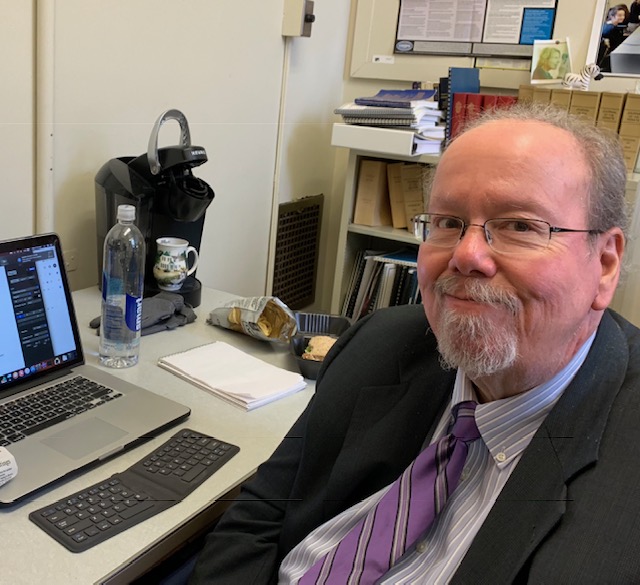
By GARRY RAYNO, Distant Dome
The 2025 session of the New Hampshire legislature began with a number of hot button issues that have garnered headlines from universal Education Freedom Accounts to restricting abortion rights.
But there is a very large elephant in the room that could overwhelm other discussions depending on what the state Supreme Court decides in the appeals of the Rand and ConVal education funding suits.
The issue of state aid to public education is beginning to resonate with state residents who are beginning to understand what was usually a local issue to debate has been severely impacted by what lawmakers have done in Concord over the years and in the past few years particularly.
At the Kearsarge Regional School District deliberative session earlier this month, an attempt to focus the rising property taxes on local decisions by proposing a spending cap which lawmakers enabled just last session, instead the attention was turned to the state’s minuscule aid compared to all but one or no other states in the country.
At some point in this legislative session, you can expect to see the Supreme Court rulings released.
The Rand ruling concerns the Statewide Education Property Tax and how it is administered could be addressed fairly easily but will impact the most property wealthy communities in the state and everyone knows how the legislature looks out for the ones with the most.
A ConVal ruling siding with the plaintiffs will require more political will and courage if lawmakers decide to address the inequities in the current education funding for both students and property taxpayers.
The House Education Funding Committee has bills that could upend the school funding system and others that tweak around the edges.
The committee heard one bill last week, House Bill 550, sponsored by the ranking Democrat on the committee Rep. David Luneau, D-Hopkinton, which would set the state per-pupil adequacy aid at $7,356 for next school, up from about $4,200.
The bill also adds various “necessary specific resource elements” needed for an adequate education outlined in Judge David Ruoff’s decision siding with the plaintiffs that include some things that are currently not in the adequate education definition in law, like transportation and facilities operation and maintenance.
House Bill 651 would raise the base cost to the same figure and also increase state differential aid for special education, low-income and English-as-a-second-language students.
The fiscal note on House Bill 550 indicates the change would add about $500 million to the cost of state aid for education.
Another bill with House Republicans leaders Joe Sweeney, R-Salem, and Jason Osborne, R-Auburn, would raise the Statewide Education Property tax about $5 per $1,000 of equalized evaluation to bring the state aid to the $7,356 mark.
The bill would also cap school budgets to the past three-year average, and anything over that would require a two-thirds majority to pass.
The bill, House bill 675, really does not change where the money is coming from, it would continue to use property taxes to pay for about 71 percent of the cost of education, but would raise it in a more equitable way so that property wealthier communities would subsidize the property poor communities and restart the war between donor and receiver towns, but that may happen anyway if the Supreme Court upholds Judge Ruoff’s Rand decision.
A bill sponsored by Rep. Glenn Cordelli, R-Tuftonboro, would keep the current system in place allowing the property wealthier communities to retain their excess revenue and use it for other education costs and adds municipal services as acceptable uses as well.
Another bill would replace the SWEPT with “a local contribution,” which would be what the town paid for the SWEPT the last year of its existence or what the town’s adequacy amount is under the formula. The community would pay whichever is less.
The figures would then be used to determine additional state education aid. The bill has the effect of lowering property taxes for the poorer communities.
Several other bills would increase what the state pays in additional aid for special education services both in the current distribution formula and also by raising state aid to nearly $30,000 for each special education student, which is about what it costs for an average special education student.
Another bill would stop the practice of prorating catastrophic special education aid to schools and require the state to pay the full amount, a bone of contention with most school districts because Education Commissioner Frank Edelblut has not asked for additional money for a number of years, while costs have skyrocketed.
The money would come from the Education Trust Fund and not the general fund as it does now.
Other bills before the House Ways and Means Committee concern education funding as well.
Two bills sponsored by Rep. Tom Schamberg, D-Wilmot, would flip the formula for the business tax revenue split between the General Fund and the Education Trust Fund.
Currently 59 percent of the revenue collected under the business profits and business enterprise taxes goes into the general fund, and 41 percent into the Education Trust Fund.
Under Schamberg’s bills, 59 percent would go into the Education Trust Fund and 41 percent into the General Fund.
More importantly, Schamberg’s House Bill 503 would reinstate the Interest and Dividends Tax, and repeal recent reductions in the rates of the Business Profits Tax, from 7.5 percent to 8.5 percent, the Business Enterprise Tax, from .5 percent to .75 percent, and the Rooms and Meals Tax, from 8.5 percent to 9 percent and the additional revenue raised would go into the Education Trust Fund.
A rough estimate of what that would be annually would be about $300 million in the first year.
There are also bills that take a backdoor approach to education funding like House Bill 283, sponsored by Rep. Dan McGuire, R-Epsom.
The state has defined an adequate education by using the state’s minimum standards and the subject matters that must be taught.
While that makes it difficult to determine what the real cost of an adequate education is, whether it is $10,000 per student as the ConVal Superintendent testified in that case, the $7,356 Judge Ruoff set “as a conservative figure” or the state’s claim of $4,100.
McGuire’s bill would remove a number of the 11 required subject areas that need to be taught under law.
They are:(1) English/language arts and reading. (2) Mathematics. (3) Science. (4) Social studies, including civics, government, economics, geography, history, and Holocaust and genocide education. (5) Arts education, including music and visual arts. (6) World languages. (7) Health and wellness education, including a policy for violations of RSA 126-K:8, I(a). (8) Physical education. (9) Engineering and technologies including technology applications. (10) Personal finance literacy. (11) Computer science.
Under McGuire’s bill, all the specifics after social studies would be removed, as well as all of 5, 6, 9, 10 and 11.
That would leave only six subject areas with one now open ended. That should be able to reduce costs for public education.
And House Concurrent Resolution 11 would declare “the directives of the judicial branch in the Claremont cases that the legislative and executive branches define an ‘adequate education,’ adopt ‘standards of accountability,’ and ‘guarantee adequate funding’ of a public education are not binding on the legislative and executive branches.”
A number of the House Republican leadership are sponsoring the concurrent resolution, which would have the force of law if passed by the senate for this two-year term, but would likely be ruled unconstitutional by the courts because it would give both the Legislature and the Executive Branch more far reaching authority than the courts.
Well if you can’t get the three-fifths majority you need to pass a proposed constitutional amendment through the House and Senate, try a resolution that would only need a majority.
The legislature has never approved a proposed constitutional amendment to remove the courts from education issues, but tried many times and failed.
Education funding will certainly have a broad discussion before lawmakers this session, — this is just what the House has proposed — but whether they take any meaningful action remains to be seen.
Garry Rayno may be reached at garry.rayno@yahoo.com.Distant Dome by veteran journalist Garry Rayno explores a broader perspective on the State House and state happenings for InDepthNH.org. Over his three-decade career, Rayno covered the NH State House for the New Hampshire Union Leader and Foster’s Daily Democrat. During his career, his coverage spanned the news spectrum, from local planning, school and select boards, to national issues such as electric industry deregulation and Presidential primaries. Rayno lives with his wife Carolyn in New London.





